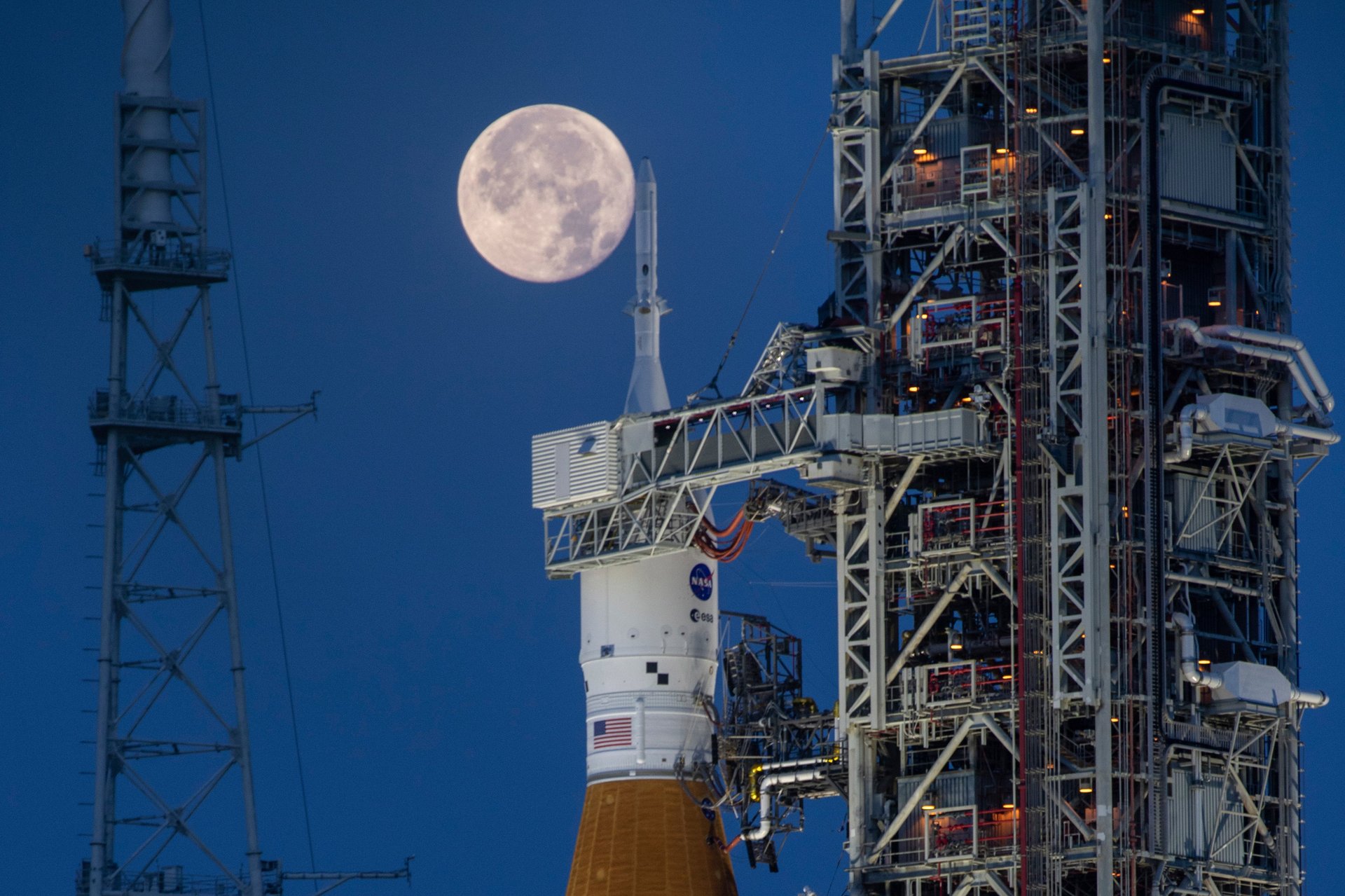More delays for NASA's astronaut moonshots, with crew landing off until 2026
Astronauts will have to wait until next year before flying to the moon and at least two years before landing on it

CAPE CANAVERAL, Fla. (AP) — Astronauts will have to wait until next year before flying to the moon and at least two years before landing on it, under the latest round of delays announced by NASA on Tuesday.
Suggested Reading
The space agency had planned to send four astronauts around the moon late this year, but pushed the flight to September 2025. The first human moon landing in more than 50 years also got bumped, from 2025 to September 2026. NASA cited safety concerns with its own spacecraft, as well as development issues with the moonsuits and landers coming from private industry.
Related Content
“Safety is our top priority," said NASA Administrator Bill Nelson. The delays will “give Artemis teams more time to work through the challenges.”
The news came barely an hour after a Pittsburgh company abandoned its own attempt to land its spacecraft on the moon because of a mission-ending fuel leak.
Launched Monday as part of NASA's commercial lunar program, Astrobotic Technology's Peregrine lander was supposed to serve as a scout for the astronauts. A Houston company will give it a shot with its own lander next month.
NASA is relying heavily on private companies for its Artemis moon-landing program for astronauts, named after the mythological twin sister of Apollo.
SpaceX’s Starship mega rocket will be needed to get the first Artemis moonwalkers from lunar orbit down to the surface and back up. But the nearly 400-foot (121-meter) rocket has launched from Texas only twice, exploding both times over the Gulf of Mexico. A third test flight is planned for February.
The longer it takes to get Starship into orbit around Earth, first with satellites and then crews, the longer NASA will have to wait to attempt its first moon landing with astronauts since 1972. During NASA’s Apollo era, 12 astronauts walked on the moon. The competition back then was the Soviet Union; now it's China. Nelson told reporters he's not worried that China will beat America to the moon with a crew, even with the latest delay. Even so, “we don't fly until it's ready,” he stressed.
The Government Accountability Office warned in November that NASA was likely looking at 2027 for its first astronaut moon landing, citing Elon Musk’s Starship as one of the many technical challenges. Another potential hurdle: the development of moonwalking suits by Houston’s Axiom Space.
“We need them all to be ready and all to be successful in order for that very complicated mission to come together,” said Amit Kshatriya, NASA's deputy associate administrator. He added that even with the delay, a 2026 moon landing represents “a very aggressive schedule.”
NASA has only one Artemis moonshot under its belt so far. In a test flight of its new moon rocket in 2022, the space agency sent an empty Orion capsule into lunar orbit and returned it to Earth. To engineers' surprise, some charred material came off the capsule's heat shield during reentry. Later, testing of another capsule uncovered a design flaw in the life-support electronics, and separate battery issues popped up.
It’s the same kind of capsule that will carry astronauts to and from the moon, linking up with Starship in lunar orbit for the trip down to the surface and back up.
Starship will need to fill up its fuel tank in orbit around Earth, before heading to the moon; SpaceX estimates an estimated 10 fuel transfers will be needed. The company plans an orbiting fuel depot to handle the job, another key aspect of the program yet to be demonstrated.
NASA’s moon-landing effort has been delayed repeatedly over the past decade, adding to billions of dollars to the cost. Government audits project the total program costs at $93 billion through 2025.
___
The Associated Press Health and Science Department receives support from the Howard Hughes Medical Institute’s Science and Educational Media Group. The AP is solely responsible for all content.